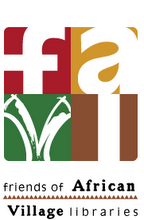Friday, April 11, 2008
Summer reading "experiment"
I've mentioned before that we've got modest funding to "treat" 4th and 5th graders (the equivalent) with some summer reading programs in the libraries in Burkina Faso. We're thinking of doing a simple randomized block design. The blocks are the five villages- can't do anything about that. Each village will then have 30 kids or so receiving reading encouragement and a couple free books and some activities in the summer, 30 kids would be invited to an intensive two-week summer reading camp run out of the library, and 30 kids would participate in a summer 8-week book discussion group, reading a book a week and discussing it. The idea is to see how big the effect is from the more costly and challenging programs (in terms of management). We'd give pre and post reading tests and some socio-economic background diagnostics. Anyone out there done something like this? Any suggestions?
Subscribe to:
Post Comments (Atom)

1 comment:
To preface all of my later ideas/suggestions, I should say I have never done something like this. :)
What is it about the villages that you will block by village? Since you are giving pre- and post-tests, why not block by pre-test scores? If the villages are significantly different in terms of distance to school, or literacy rates, then I could see why blocking by village is more appropriate. You likely already know this, but the block design is for when you think there is less heterogeneity within a block than across the greater sample.
Randomizing at the individual level will give you more statistical power (in case the treatment effect is small, since you only have a short intervention). One idea would be to enumerate all 4th and 5th graders in the five villages and randomly select from the list who will be in the treatment, but provide the entire group with pre- and post-tests (seems relatively straightforward if you give the tests before the close of school and again at the opening of school). You could still stratify by village before assignment if you think there are village-level characteristics that will likely have an impact on the effectiveness of the program.
I like the three different treatments. You should just make sure the statistical power will be sufficient to compare the three treatments to the control and to each other (i.e. use the command sampsi in Stata).
I'm excited to learn more about the project -- perhaps we could replicate it with a library in rural Malawi.
Post a Comment